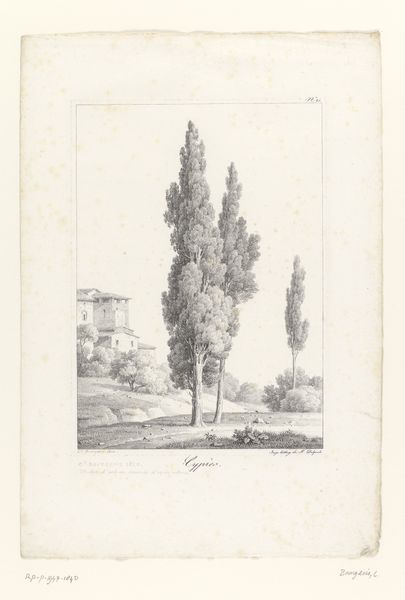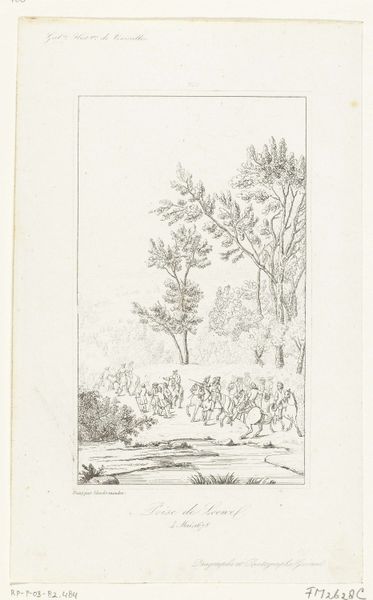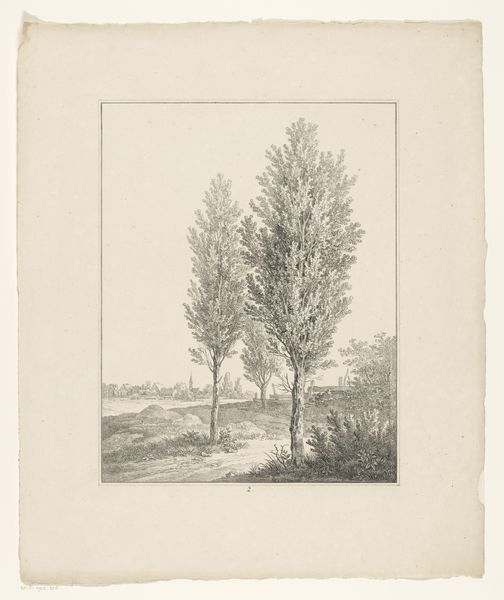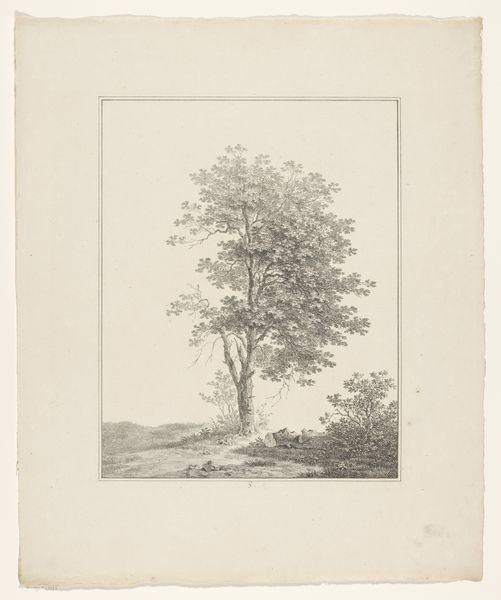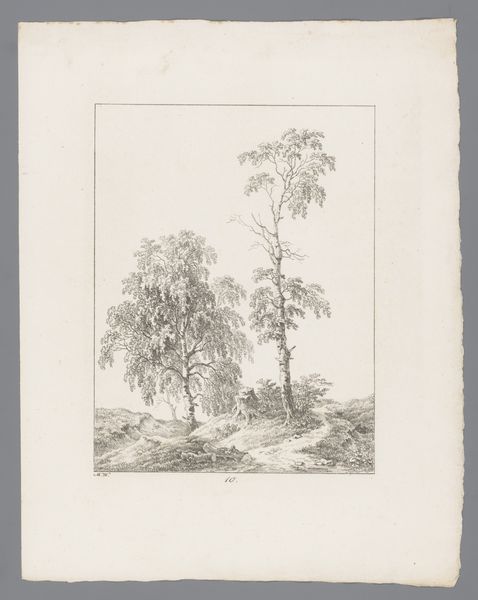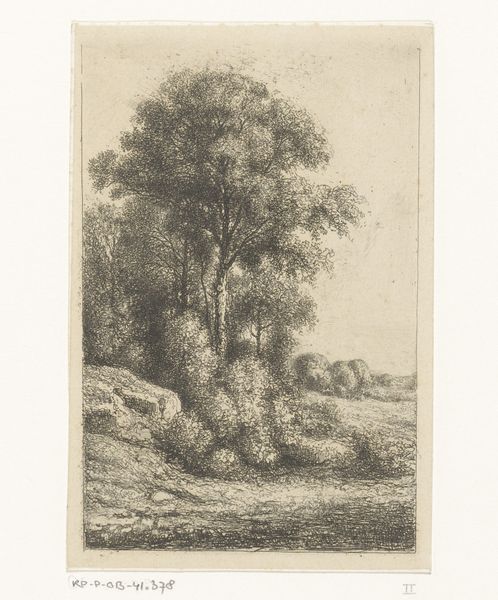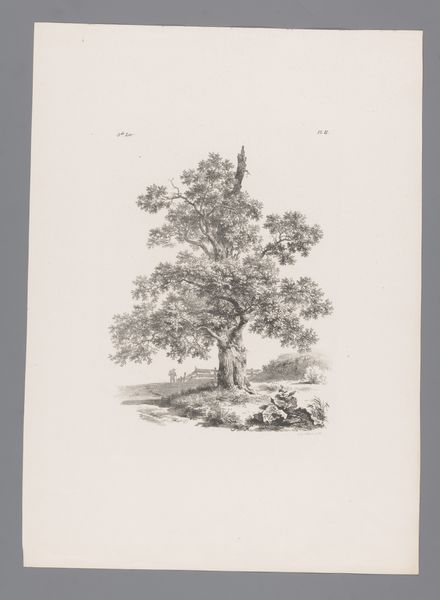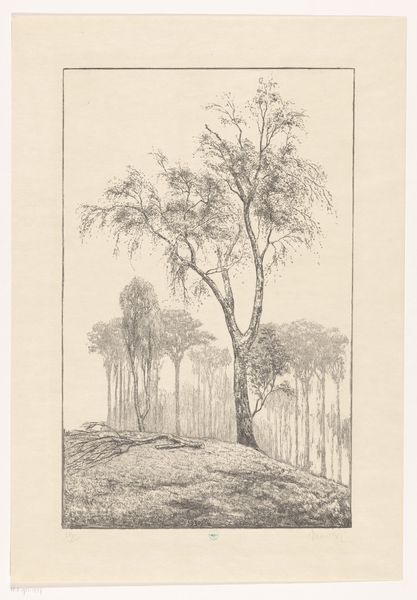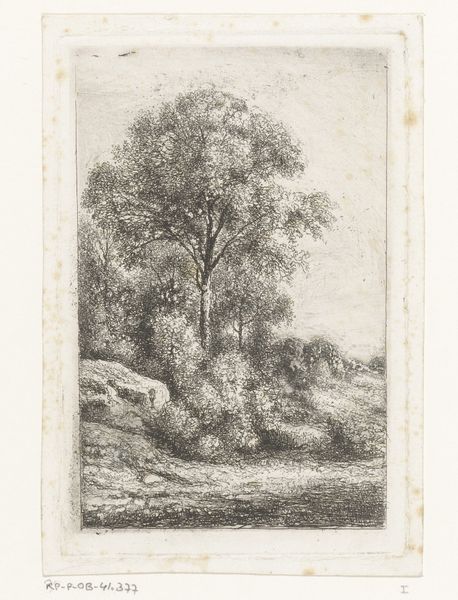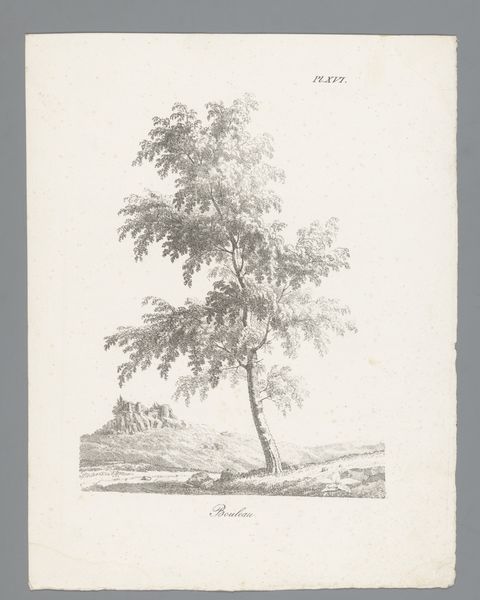
drawing, print, etching
#
drawing
# print
#
etching
#
landscape
#
etching
#
realism
Dimensions: height 210 mm, width 165 mm
Copyright: Rijks Museum: Open Domain
Editor: So, this is "Loofboom en cipressen" or "Deciduous Tree and Cypresses," dating roughly from 1819 to 1837. It's an etching at the Rijksmuseum by an anonymous artist, very simple and precise. What strikes me is how different the etching style is compared to a painting. What stands out to you about the material and production process here? Curator: Considering this print through a materialist lens brings into focus the accessibility of printmaking in the 19th century. The etching process itself—the labor, the specific materials, the biting of the plate with acid—allows for a reproduction and dissemination of imagery unlike unique paintings of the time. Editor: So you’re saying etching made art more readily available? How did that shift art consumption? Curator: Exactly! Think about it. Who had access to paintings? Etchings democratized access to imagery. What does it mean for artists, patronage, and ultimately, the subjects that are depicted when art becomes reproducible? This seemingly simple landscape could have reached a broad audience, shaping perceptions of nature. What class of people would have had this in their home? How did they value nature? Editor: That’s really fascinating. I never thought about it that way before. So, the value isn’t just in the image itself, but also in how the etching process changed how art was consumed. What I still struggle to see, though, is where artistic skill is necessary when mass producing a work. Is that labor always viewed as just reproduction and consumption? Curator: The artistry lies in the translation, the careful rendering through line, and the controlled application of the acid. Consider the labor involved and the skill needed to create such detailed linework. Does that alter your appreciation of it at all? Editor: Definitely. Knowing how it impacted access really makes you think about its social context differently. Curator: Precisely. By examining the means of production, we gain a deeper understanding of the art and its role within society.
Comments
No comments
Be the first to comment and join the conversation on the ultimate creative platform.



